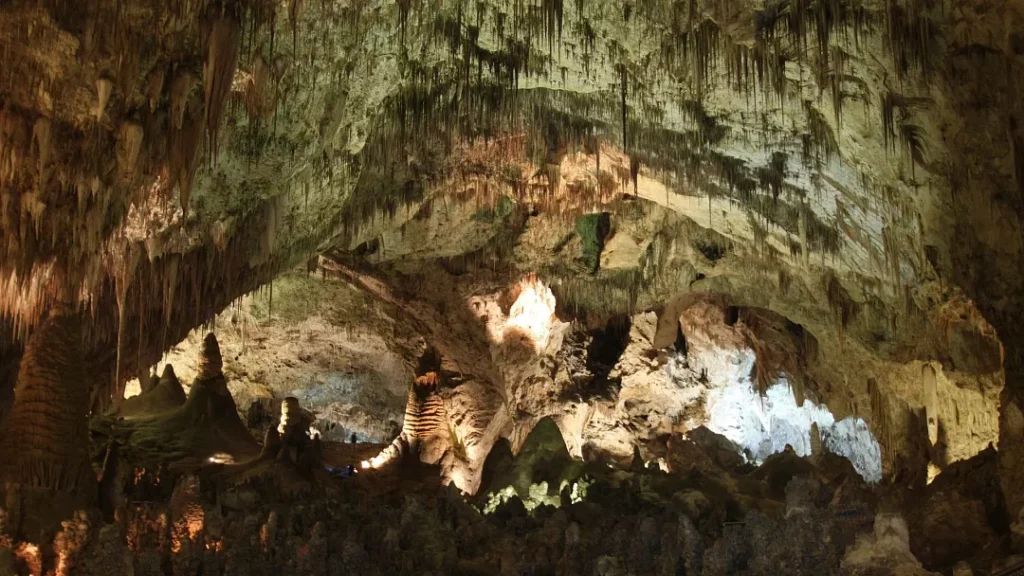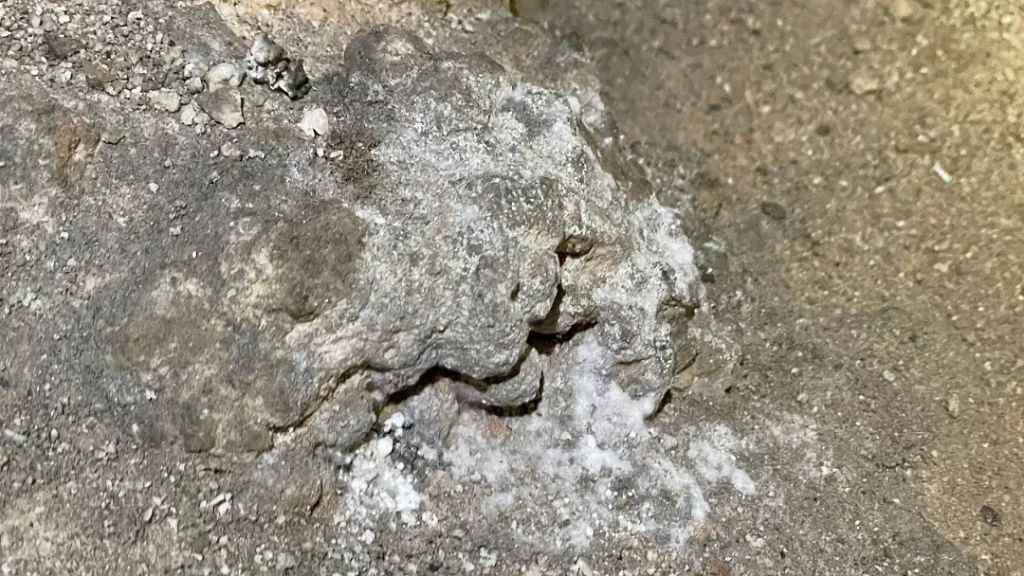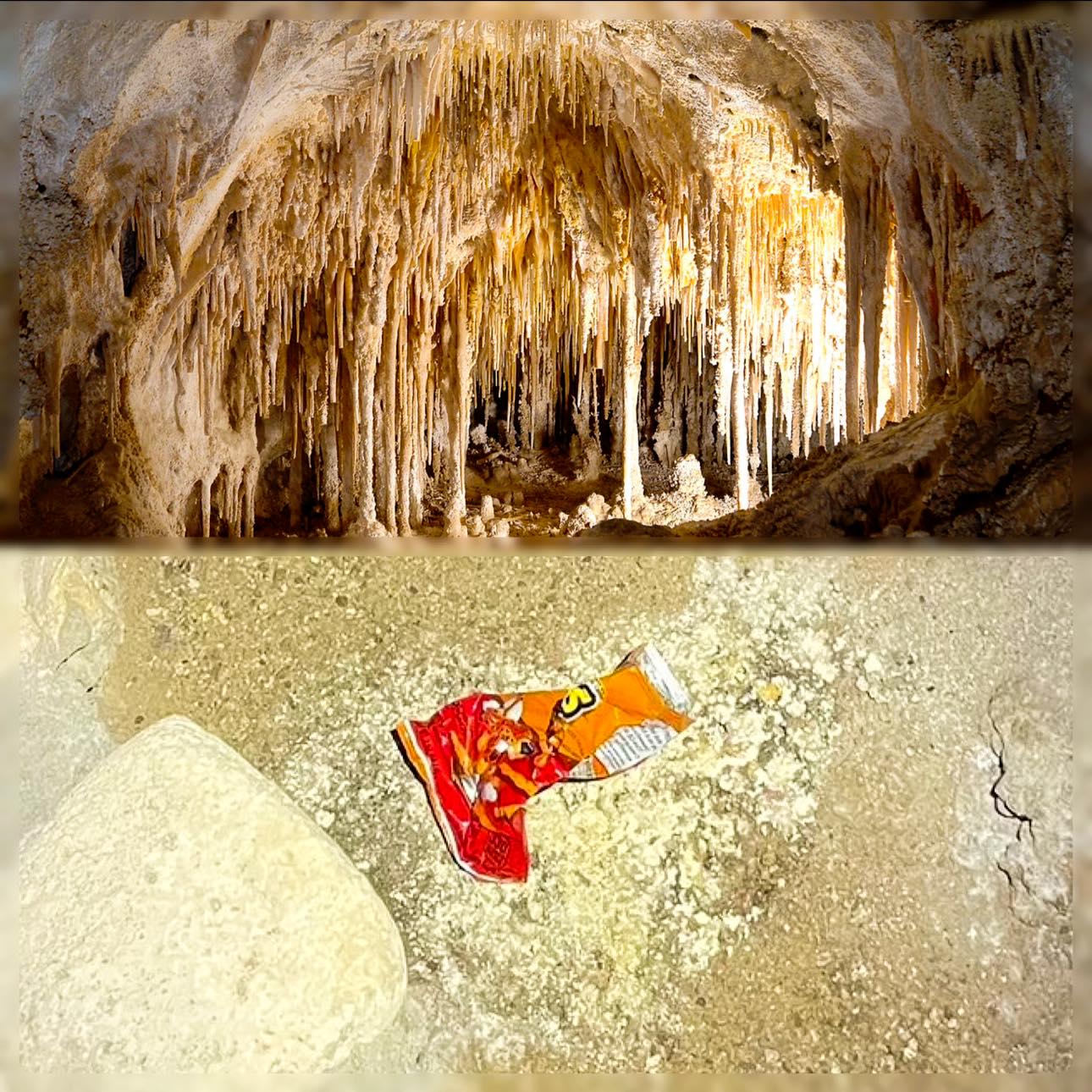A pack of Cheetos dropped in national park demonstrates why you should think twice before littering.
A bag of Cheetos dropped on the ground in a US national park has been a “world-changing” event for the creatures that live there, rangers say.
The bag could have been there a day or two or maybe just hours, but those salty morsels of processed corn made soft by thick humidity triggered the growth of mould on the cavern floor and on nearby cave formations.
It has impacted the tiny microbes and insects that live in this specialised subterranean environment in Carlsbad Caverns National Park, southern New Mexico.

“To the ecosystem of the cave it had a huge impact,” the park noted in a Facebook post, explaining that cave crickets, mites, spiders and flies soon organised to eat and disperse the foreign mess, essentially spreading the contamination.
Park rangers collect tonnes of trash left behind by visitors each year.
The bright orange bag was spotted off trail by a ranger during one of the regular sweeps that park staff make through the Big Room, the largest single cave chamber by volume in North America, at the end of each day. They are looking for straggling visitors and any litter or other waste that might have been left behind on the paved trail.
The Big Room is a popular spot at Carlsbad Caverns. It is a magical expanse filled with towering stalagmites, dainty stalactites and clusters of cave popcorn.
From this underground wonderland in New Mexico to lake shores in Nevada, tributaries along the Grand Canyon and lagoons in Florida, park rangers and volunteers collect tonnes of trash left behind by visitors each year as part of an ongoing battle to keep unique ecosystems from being compromised while still allowing visitors access.
According to the National Park Service, more than 300 million people visit the national parks each year, bringing in and generating nearly 63.5 million tonnes of trash – most of which ends up where it belongs in rubbish bins and recycling containers.
But for the rest of the discarded snack bags and other debris, it often takes work to round up the waste, and organisations like Leave No Trace have been pushing their message at trailheads and online.

How do rangers keep America’s national parks clean?
At Carlsbad Caverns, volunteers comb the caverns collecting lint. One five-day effort netted as much as 23 kilograms. Rangers also have sweep packs and spill kits for the more delicate and sometimes nasty work that can include cleaning up human waste along the trail.
“It’s such a dark area, sometimes people don’t notice that it’s there. So they walk through it and it tracks it throughout the entire cave,” says Joseph Ward, a park guide who is working specifically on getting the ‘leave no trace’ message out to park visitors and classrooms.
The rangers’ kits can include gloves, bin bags, water, bleach mixtures for decontamination, vacuums and even bamboo toothbrushes and tweezers for those hard-to-reach spots.
As for the spilled Cheetos, Ward says that could have been avoided because the park doesn’t allow food beyond the confines of the historic underground lunchroom.
After the bag was discovered in July, cave specialists at the park settled on the best way to clean it up. Most of the mess was scooped up, and a toothbrush was used to remove rings of mould and fungi that had spread to nearby cave formations.
It was a 20-minute job.Some jobs can take hours and involve several park employees, Ward says.

